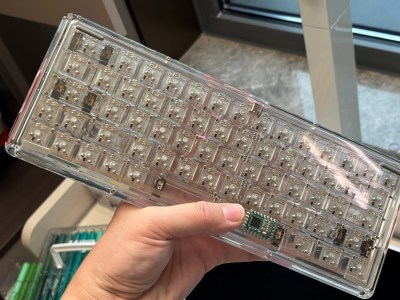We typically think of neon signs as big commercial advertisements, hanging inside windows and lofted on tall signposts outside highway-adjacent businesses. [James Akers] has gone the other route with a fashionable build, creating little wearable neon necklaces that glow beautifully in just the same way.
Aiming for small scale, [James] began with 6 mm blue phosphor glass tube, which was formed to reference Pink Pony Club, one of Chappell Roan’s more popular songs. The glass was then filled with pure neon up to a relatively low pressure of just 8 torr. This was an intentional choice to create a more conductive lamp that would be easier to run off a battery supply. The use of pure neon also made the tubes easy to repair in the event they had a leak and needed a refill. A Midget Script gas tube power supply is used to drive the tiny tubes from DC power. In testing, the tubes draw just 0.78 amps at 11.8 volts. It’s not a light current draw, but for neon, it’s pretty good—and you could easily carry a battery pack to run it for an hour or three without issue.
If you’re not a glass blower, fear not—you can always make stuff that has a similar visual effect with some LEDs and creativity. Meanwhile, if you’ve got your own neon creations on the go—perhaps for Halloween?—don’t hesitate to light up the tipsline!


















